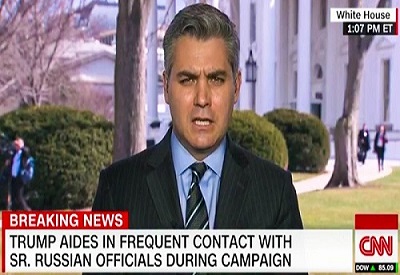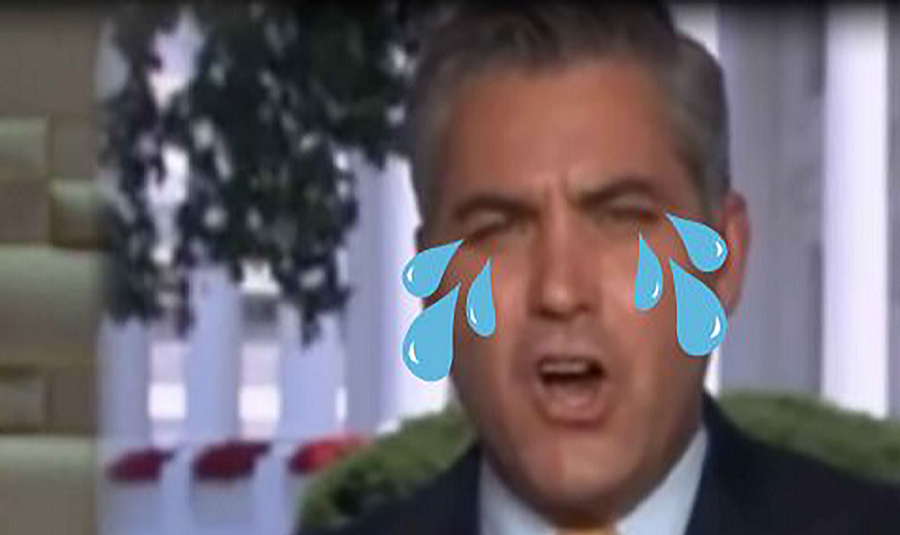Acosta’s legacy: Kill the lights, shut off the cameras, reform White House press corps
Reporters can voluntarily ramp back their snarky, narrative-driven approach to news gathering and return to old-school best practices or face sterner measures. - James S. Robbins, USA Today

The flap over CNN White House correspondent Jim Acosta’s press pass raises larger questions about the troubling relationship between journalists and the Trump presidency. Fixing the problem will take more than simply ejecting members of the press who can’t behave.
Rude reporters are nothing new. Recall the days when Sam Donaldson would shout questions at President Ronald Reagan, and the Gipper would smile and pretend not to hear them. Some back then criticized Donaldson for being bad-mannered, and maybe he was, but at least his questions were substantive.
Contrast this with Acosta accusing the president of “demonizing” migrants with a political ad showing them climbing over a border wall. In the world of actual news, the fact that migrants have climbed fences and barriers along the border many times before isn’t controversial at all. But that reality does not fit Acosta’s narrative.
Part of the problem is the overheated way some members of the news media have reacted to the Trump presidency. Transforming the traditional “watchdog” role into “The Resistance” helps account for Trump’s 92 percent negative press coverage. Veteran Washington reporter Bob Woodward noted that there has been an “emotional reaction” to the president, and many “have become emotionally unhinged about this.” Woodward — definitely no fan of Trump — says the solution lies in better reporting and less “smugness.”
The White House is a theater for the press
But another important factor is the willingness of some reporters to put themselves at the center of the story. John P. Roche, who was an adviser in Lyndon Johnson’s White House, ruefully observed that television killed American politics. The same might be said about TV’s impact on substantive political reporting, especially when supercharged by the internet and social media. Televised White House briefings and news conferences have become theaters for self-promoting journalists seeking to disrupt rather than describe. Acosta’s antics are a symptom of a problem enabled by a format that encourages personality-driven reporting.
Live television encourages the hectoring tone of reporters who make provocative statements masked as questions, trying to create news rather than cover it. Turning off the cameras could go a long way to mitigating this. The White House experimented with this approach last year, and in response Acosta suggested that reporters stage a walkout. But ending live televised coverage gained bipartisan support from Ari Fleischer, former press secretary to George W. Bush, and Bill Clinton’s press secretary Mike McCurry, who argued it would result in toned-down briefings and less “gotcha” journalism.
Reporters naturally resist any proposed restrictions on their prerogatives, usually invoking the First Amendment to support their claims of privilege. Acosta’s defense team raised the precedent set in the 1977 D.C. Circuit Court of Appeals case Sherrill v. Knight, in which the court stated that when White House press facilities have “been made publicly available as a source of information for newsmen, the protection afforded news gathering under the First Amendment guarantee of freedom of the press requires that this access not be denied arbitrarily or for less than compelling reasons.”
It’s time to update White House press briefings
The Sherrill case set a standard for equal access, but the White House can still choose how to make access available. For example, it might be time to rethink the custom of the daily news briefing, which is rooted in a 20th century top-down corporate view of the media world, echoing a time when the news was dominated by three TV networks, two wire services and a handful of major newspapers. It seems oddly out of place in the networked information age.
Likewise, it might make sense to set up a press center off the White House grounds, with better facilities, more workspace and the ability to provide direct access to a greater variety of reporting outlets. The current briefing room could be removed and Franklin Roosevelt’s indoor swimming pool — which still exists beneath it — could be restored.
There is also the possibility that reporters could voluntarily ramp back their snarky, narrative-driven approach to news gathering and return to old-school best practices. CBS News White House correspondent Major Garrett was one of the few journalists in the wake of the Acosta imbroglio to uphold the idea of a “standard of conduct” for reporters on the White House beat.
“I respect the institution and the country’s choice,” Garrett said, noting that he does his “level best to not make myself part of story, and I think the best journalists operate that way.”
Indeed they do. If only more of them were covering the White House.
James S. Robbins, a member of USA TODAY’s Board of Contributors and author of “Erasing America: Losing Our Future by Destroying Our Past,” has taught at the National Defense University and the Marine Corps University and served as a special assistant in the office of the secretary of Defense in the George W. Bush administration. Follow him on Twitter: @James_Robbins


